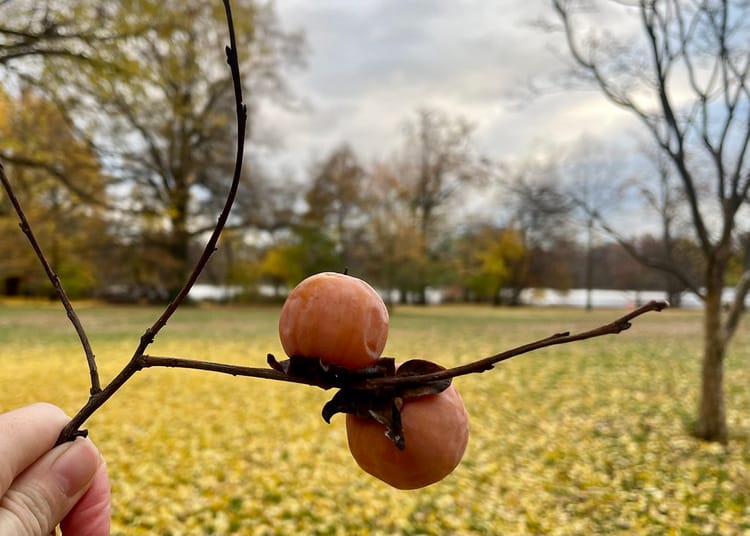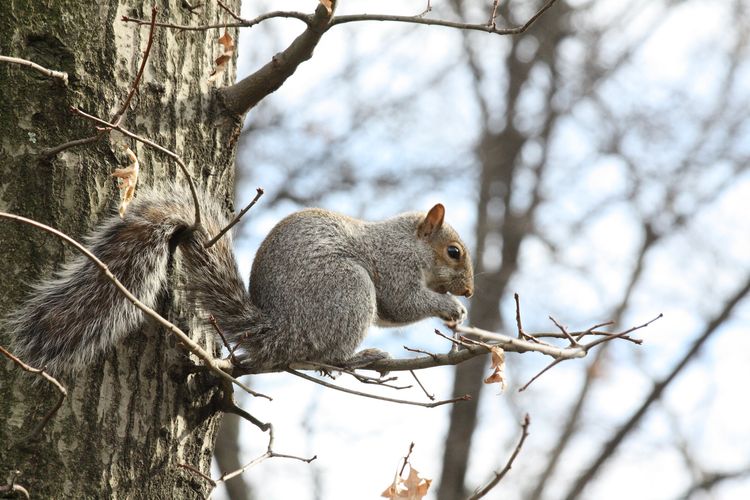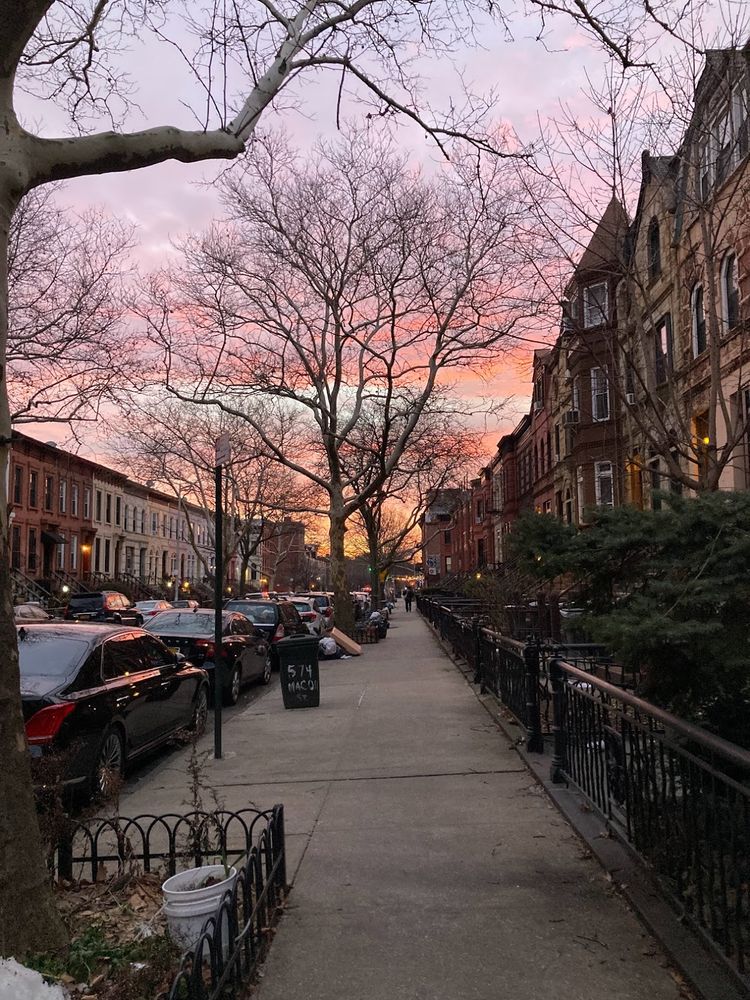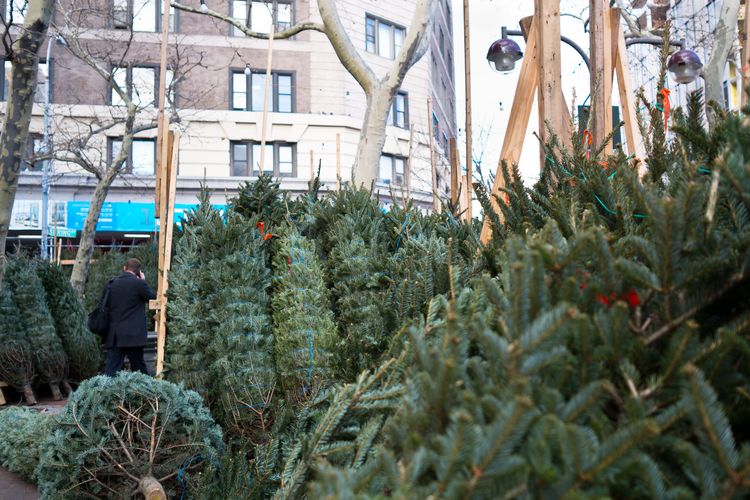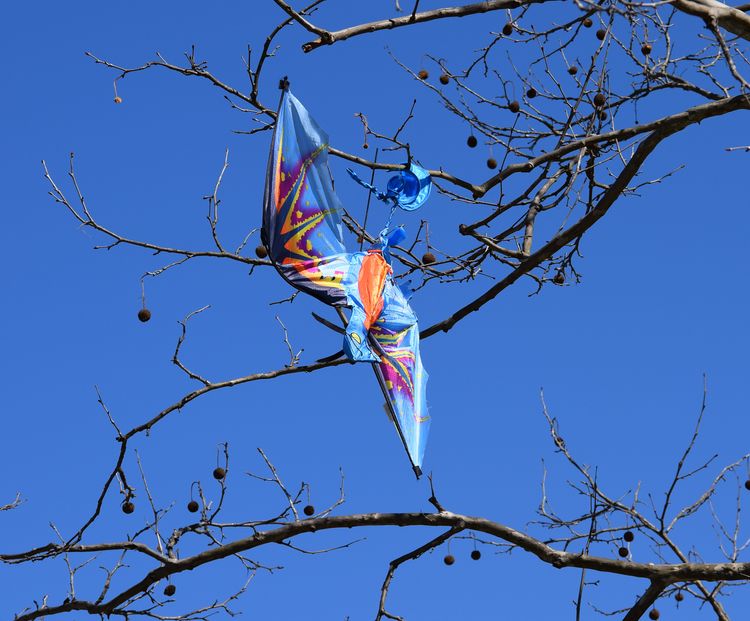The Highly Combustible Christmas Tree Apparition of April

The last snow of the season has melted. The final strand of holiday lights has long since been unplugged. Easter candy has come and gone on the drugstore shelves. The sunny faces of the first daffodils have peeked through the ground. No one is thinking of Christmas. And then, its ghost appears.
Tossed on sidewalks, their brittle needles fall in halos around them; heaped on top of trash bag mounds, they loom like specters. The Christmas trees have returned. They are husks of their wintry selves, even if webs of tinsel or one gleaming ornament still cling to their parched branches. All it would take is a tossed cigarette, or maybe just the glare of a sunny day, to ignite their desiccated forms. In some apartments, they were forgotten in a corner, or untouched in a desire to freeze time, or perhaps simply ignored out of laziness, until they reached such a state of decay that they demanded their expulsion to the street. The mystery of their seclusion cannot be known. But every year they appear in small numbers, skeletal and the color of aged parchment.
Don’t get too close, their brittle husks could scrape your skin like sandpaper. But notice. Was Christmas really that long ago? Where did those months go? You still find yourself forgetting to write the new year on dates, but the months are racing on. Spring is here, winter is a memory. Buy tulips at the farmer’s market; indulge in drinks on rooftops; open all the windows. Push your winter coat to the back of the closet. But remember that these days, too, are fleeting, and savor their taste.

- Some of this past season’s Christmas trees have been put to work warming the roots of street trees. NYC Parks has more tips on how you can give the living tree neighbors near you some care.
- Take note of your curbside ecology: the bags of trash regularly heaped on NYC sidewalks help rats to thrive. Stand back and see what you can observe. Rats are clever and will find passageways you never knew existed—a hole in the concrete, a route along a wall, and even vertical surfaces (yes rats can climb walls)—to attain their feast. Take the Synanthrope Preserve’s audio tour of Tompkins Square Park to learn more about how a rat sees the city.
- Despite the limited confines of a New York City apartment, we all keep things past their disposal date: a VHS tape without a VCR to play it on, a shirt that has never fit but still has the whisper of your ex’s smell, the single remaining bowl from a set of four you bought for your first apartment (the cat broke one in a fit of feline spite, two were lost to soapy-handed mishaps). Find that thing in your house, but do not throw it to the curb, do not ask if it brings you joy. Maybe it stabs your heart, and that’s exactly why you keep it. Just hold it in your hand, and remember why it still lives with you.
